Myths about Recycling - Uncover the Truth
Recycling is a hot topic these days, and for good reason. With the increasing amount of waste generated by our consumer-driven society, it's crucial to understand the ins and outs of recycling. Unfortunately, there are many myths and misconceptions that cloud our understanding of this vital practice. In this article, we will delve deep into some of the most common myths about recycling, unravel the truths behind them, and empower you to make informed choices that contribute to a more sustainable future. So, let's get started!
Many people feel overwhelmed by the recycling process, thinking it’s a tangled web of rules and regulations that are just too hard to navigate. This misconception can deter individuals from participating in recycling programs altogether. However, the truth is that understanding your local recycling guidelines can simplify the process significantly. Most communities provide clear instructions on what can and cannot be recycled, making it easier for you to adopt better waste management habits. By familiarizing yourself with these guidelines, you can not only recycle more effectively but also contribute to reducing waste.
It’s a common belief that all plastic items can be tossed into the recycling bin without a second thought. Unfortunately, this isn't the case. Only specific types of plastics are accepted by recycling facilities, which means it’s essential to check your local regulations. To help you better understand the types of plastics that can be recycled, let's take a closer look at the various codes assigned to them.
Different types of plastics have varying recycling capabilities. Knowing these codes can help you make informed choices:
| Plastic Code | Type of Plastic | Recyclability |
|---|---|---|
| 1 | Polyethylene Terephthalate (PET) | Widely Recyclable |
| 2 | High-Density Polyethylene (HDPE) | Widely Recyclable |
| 3 | Polyvinyl Chloride (PVC) | Limited Recyclability |
| 4 | Low-Density Polyethylene (LDPE) | Limited Recyclability |
| 5 | Polypropylene (PP) | Increasingly Recyclable |
| 6 | Polystyrene (PS) | Not Recyclable |
| 7 | Other (various types) | Varies |
The codes on plastic products range from 1 to 7, each representing a different type of plastic. While codes 1 and 2 are widely recyclable, others like 6 and some types of 7 are often not accepted in curbside recycling programs. Knowing these codes can empower you to make better choices when it comes to recycling.
Items such as polystyrene (often found in disposable coffee cups) and plastic bags are frequently not accepted in curbside recycling programs. This can lead to confusion about what can actually be recycled. It’s crucial to check local guidelines to avoid contaminating recyclable materials.
Recycling rules can vary significantly from one location to another. This is why it’s imperative to consult your local guidelines. Understanding these rules can enhance your recycling efforts and reduce contamination, ultimately leading to a more efficient recycling process.
Some people argue that recycling is futile, claiming it doesn’t make a difference in the grand scheme of things. This couldn't be further from the truth. Recycling plays a crucial role in conserving resources, reducing landfill waste, and lowering greenhouse gas emissions. Instead of viewing recycling as a chore, consider it an investment in the future of our planet.
Recycling significantly contributes to protecting the environment. By reducing pollution and conserving natural resources, it helps create a healthier planet for future generations. Think of recycling as a safety net for our environment, catching waste before it becomes a problem.
Not only does recycling benefit the environment, but it also stimulates the economy. It creates jobs and generates revenue, demonstrating that recycling is both environmentally and economically advantageous. Imagine it as a cycle where everyone wins—businesses, communities, and the planet!
Many individuals mistakenly believe that recycling is limited to just paper and plastic. The reality is that various materials, including metals and glass, can be recycled. Expanding the scope of recycling efforts can lead to a more sustainable future.
Metals like aluminum and steel are highly recyclable and can be reused multiple times without losing quality. Understanding their recyclability can enhance metal waste management practices, making a significant impact on resource conservation.
Glass is unique in that it is 100% recyclable and can be recycled indefinitely. This process saves energy and reduces the need for raw materials, making it an essential component of waste management. Think of glass recycling as a perpetual cycle that keeps giving back to the environment.
Some believe recycling is solely an individual responsibility. However, businesses and communities play a crucial role in promoting recycling initiatives and creating a culture of sustainability. It’s a collective effort that requires participation from all levels of society.
Many companies implement recycling programs to reduce waste and promote sustainability. These initiatives can significantly impact environmental conservation and corporate social responsibility. When businesses take action, it sets a powerful example for individuals to follow.
Communities can foster recycling through organized programs and awareness campaigns. Collective efforts enhance recycling rates and create a more sustainable environment for all residents. When we come together, we can achieve extraordinary results!
Q: What can I recycle?
A: It varies by location, but common items include paper, cardboard, certain plastics, metals, and glass. Check your local guidelines for specifics.
Q: Can I recycle plastic bags?
A: Most curbside recycling programs do not accept plastic bags. Instead, consider returning them to designated drop-off locations.
Q: Does recycling really make a difference?
A: Yes! Recycling conserves resources, reduces waste, and lowers greenhouse gas emissions, making it essential for environmental sustainability.
Q: How can businesses support recycling?
A: Companies can implement recycling programs, educate employees, and partner with local recycling organizations to promote sustainability.

Myth 1: Recycling is Too Complicated
Many people throw their hands up in frustration when it comes to recycling, believing that the whole process is just too complicated to bother with. This myth, however, couldn't be further from the truth! The reality is that understanding local recycling guidelines can significantly simplify the process and empower individuals to make a positive impact on the environment.
First off, it’s important to recognize that recycling is not a one-size-fits-all scenario. Different areas have different rules, which can indeed create some confusion. But fear not! Most local waste management agencies provide clear and concise guidelines that can help demystify the recycling process. By taking just a few minutes to familiarize yourself with these rules, you can turn what seems like a daunting task into a straightforward routine.
For instance, many municipalities offer online resources, flyers, or even mobile apps that outline what materials are accepted for recycling. These resources often include:
- Types of materials that can be recycled (like paper, plastics, metals, and glass)
- Instructions on how to prepare items for recycling (like rinsing containers or removing labels)
- Information on local drop-off centers for items that can’t be picked up curbside
By understanding these guidelines, you can not only enhance your recycling efforts but also contribute to a larger movement toward waste reduction. Think of it this way: just as you wouldn’t go into a new restaurant without checking the menu, why would you approach recycling without knowing the rules? Taking the time to educate yourself can lead to more effective recycling practices, less contamination in the recycling stream, and ultimately a healthier planet.
Moreover, participating in recycling can become a community effort. When neighbors share tips and tricks about local recycling practices, it fosters a sense of camaraderie and collective responsibility. You can even turn it into a fun activity—imagine organizing a neighborhood recycling day where everyone learns together! So, the next time you think about recycling and feel overwhelmed, remember: it’s simply about knowing the rules and making a commitment to stick to them.

Myth 2: All Plastics are Recyclable
Many individuals have the misconception that every plastic item they encounter can be tossed into the recycling bin without a second thought. This belief can lead to frustration and confusion when they discover that not all plastics are created equal. In reality, only specific types of plastics are accepted by recycling facilities, and understanding these distinctions is crucial for effective recycling. It's essential to check local regulations, as they vary widely and dictate what can and cannot be recycled in your area.
To help clarify this issue, let's take a closer look at the different types of plastics and their recyclability. The Society of the Plastics Industry has established a coding system that assigns a number from 1 to 7 to plastic products, each representing a different type of plastic. Here’s a quick breakdown:
| Plastic Code | Type of Plastic | Recyclable? |
|---|---|---|
| 1 | Polyethylene Terephthalate (PET) | Yes |
| 2 | High-Density Polyethylene (HDPE) | Yes |
| 3 | Polyvinyl Chloride (PVC) | Limited |
| 4 | Low-Density Polyethylene (LDPE) | Limited |
| 5 | Polypropylene (PP) | Yes |
| 6 | Polystyrene (PS) | No |
| 7 | Other (various plastics) | Varies |
As seen in the table, plastics coded as 1, 2, and 5 are widely accepted in recycling programs, while those labeled 6 are typically not recyclable in curbside programs. Additionally, plastics coded as 3, 4, and 7 may have limited recycling options depending on local facilities. This highlights the importance of being informed about local recycling guidelines to avoid contamination and ensure that your efforts contribute positively to the recycling process.
Moreover, certain common plastic items often found in households, such as polystyrene foam (often used in takeout containers) and plastic bags, are frequently excluded from curbside recycling programs. These items can cause significant issues at recycling facilities, leading to entire batches of recyclable materials being rejected.
In conclusion, while the idea of recycling all plastics is appealing, the reality is more nuanced. By understanding the specific types of plastics that can be recycled and adhering to local guidelines, we can make informed decisions that enhance our recycling efforts. Remember, when in doubt, check your local recycling rules—it's a small step that can lead to significant environmental benefits!

Subtypes of Recyclable Plastics
Understanding the is essential for effective recycling practices. Not all plastics are created equal, and knowing the differences can empower consumers to make better choices. Plastics are categorized by their resin identification codes, which range from 1 to 7. Each code indicates a specific type of plastic, and not all of them are recyclable in every area. Here’s a brief rundown of these codes and what they mean:
| Code | Type of Plastic | Recyclability |
|---|---|---|
| 1 | Polyethylene Terephthalate (PET) | Widely Recyclable |
| 2 | High-Density Polyethylene (HDPE) | Widely Recyclable |
| 3 | Polyvinyl Chloride (PVC) | Limited Recyclability |
| 4 | Low-Density Polyethylene (LDPE) | Limited Recyclability |
| 5 | Polypropylene (PP) | Widely Recyclable |
| 6 | Polystyrene (PS) | Not Recyclable |
| 7 | Other (various types) | Varies |
It's important to note that while codes 1 and 2 are widely accepted in most curbside recycling programs, others like 6 (polystyrene) often end up in landfills. This can be confusing for consumers who assume all plastics can be recycled. Additionally, plastics labeled with the code 7 can be a mixed bag; this category includes various types of plastics that may or may not be recyclable depending on local facilities.
By familiarizing yourself with these codes, you can make more informed decisions about what to recycle. Always check your local recycling guidelines to understand which types of plastics are accepted in your area. This knowledge not only helps in reducing waste but also contributes to a more sustainable future for our planet. Remember, every small action counts!
- What can I do with non-recyclable plastics? Non-recyclable plastics can often be reused or repurposed. Consider using them for DIY projects or check if local stores have a take-back program.
- How can I find out what plastics are recyclable in my area? Most local waste management agencies provide guidelines on their websites, or you can contact them directly for assistance.
- Is it better to throw away plastics than to recycle them if they are not accepted? It's generally better to find ways to reuse or repurpose plastics rather than throwing them away, as this can help reduce overall waste.

Understanding Plastic Codes
This article explores common misconceptions surrounding recycling, aiming to clarify the facts and encourage more effective waste management practices for a sustainable future.
Many believe recycling processes are overly complex, deterring participation. In reality, understanding local guidelines simplifies recycling and promotes better habits for waste reduction.
A common misconception is that all plastic items can be recycled. However, only specific types are accepted by recycling facilities, making it essential to check local regulations.
Different types of plastics have varying recycling capabilities. Knowing the codes on plastic products helps consumers make informed choices about what can be recycled.
When it comes to recycling, understanding plastic codes is crucial for making informed decisions. These codes, typically found on the bottom of plastic containers, range from 1 to 7 and indicate the type of plastic used in the product. Each number corresponds to a specific polymer, with some being more easily recyclable than others. Here's a quick overview:
| Code | Type of Plastic | Recyclability |
|---|---|---|
| 1 | Polyethylene Terephthalate (PET) | Widely recyclable |
| 2 | High-Density Polyethylene (HDPE) | Widely recyclable |
| 3 | Polyvinyl Chloride (PVC) | Not commonly recycled |
| 4 | Low-Density Polyethylene (LDPE) | Not commonly recycled |
| 5 | Polypropylene (PP) | Increasingly recyclable |
| 6 | Polystyrene (PS) | Not recyclable |
| 7 | Other (various types) | Varies by type |
Understanding these codes not only empowers consumers but also enhances recycling efforts. For example, PET and HDPE are widely accepted in most curbside recycling programs, while polystyrene is often left out, leading to confusion. By familiarizing yourself with these codes, you can contribute to a more effective recycling system.
Recycling rules vary by location, making it crucial to consult local guidelines. Understanding these rules can significantly enhance recycling efforts and reduce contamination.
Some people argue that recycling is futile and does not make a difference. However, recycling conserves resources, reduces landfill waste, and lowers greenhouse gas emissions.
Recycling plays a vital role in protecting the environment. It helps reduce pollution and conserves natural resources, contributing to a healthier planet for future generations.
Recycling not only benefits the environment but also stimulates the economy. It creates jobs and generates revenue, demonstrating that recycling is both environmentally and economically advantageous.
Many people think recycling is limited to paper and plastic. In reality, various materials, including metals and glass, can be recycled, expanding the scope of recycling efforts.
Metals like aluminum and steel are highly recyclable and can be reused multiple times without losing quality. Understanding their recyclability can enhance metal waste management practices.
Glass is 100% recyclable and can be recycled indefinitely. Its recycling process saves energy and reduces the need for raw materials, making it an essential component of waste management.
Some believe recycling is solely an individual responsibility. However, businesses and communities play a crucial role in promoting recycling initiatives and creating a culture of sustainability.
Many companies implement recycling programs to reduce waste and promote sustainability. These initiatives can significantly impact environmental conservation and corporate social responsibility.
Communities can foster recycling through organized programs and awareness campaigns. Collective efforts enhance recycling rates and create a more sustainable environment for all residents.
- What types of materials can be recycled? Most materials include paper, plastics, metals, and glass.
- How can I find my local recycling guidelines? Check your local government website or waste management authority for specific guidelines.
- Is recycling worth the effort? Absolutely! Recycling conserves resources, reduces pollution, and has economic benefits.

Common Non-Recyclable Plastics
When it comes to recycling, not all plastics are created equal. In fact, there are several types of plastics that are commonly deemed non-recyclable, leading to confusion among consumers. Understanding these materials is crucial for effective waste management. For instance, many people are surprised to learn that polystyrene, often found in disposable coffee cups and takeout containers, is typically not accepted in curbside recycling programs. This type of plastic can be incredibly detrimental to the environment as it takes hundreds of years to decompose.
Another common culprit is plastic bags. These lightweight materials are notorious for causing contamination in recycling streams. When mixed with other recyclables, they can jam machinery at recycling facilities, leading to costly downtimes. As a result, many municipalities have opted to exclude plastic bags from their recycling programs altogether. Instead, they encourage consumers to use reusable bags, which not only reduces waste but also promotes sustainable practices.
Additionally, cling film and other types of flexible plastics fall into the non-recyclable category. These materials are often used for food packaging but can be problematic for recycling processes due to their thin, flexible nature. They can easily tangle with machinery and are not accepted by most recycling centers. It's essential to check local guidelines to determine the best disposal methods for these items, as they often need to be thrown away rather than recycled.
To summarize, here are some of the most common non-recyclable plastics:
- Polystyrene (e.g., foam cups, takeout containers)
- Plastic bags (e.g., grocery bags, bread bags)
- Cling film (e.g., plastic wrap)
- Flexible plastics (e.g., bubble wrap, certain food packaging)
By being aware of these non-recyclable plastics, consumers can make more informed choices about their waste disposal habits. This not only helps in reducing contamination in recycling streams but also promotes a more sustainable approach to waste management.
Q1: Why are some plastics not recyclable?
A1: Certain plastics are not recyclable due to their chemical composition and the way they are processed. Materials like polystyrene and plastic bags can cause significant issues in recycling facilities, leading to their exclusion from many programs.
Q2: What should I do with non-recyclable plastics?
A2: Non-recyclable plastics should generally be disposed of in the trash. However, consider reusing items when possible or seeking out local programs that may accept specific materials for alternative recycling methods.
Q3: How can I reduce my use of non-recyclable plastics?
A3: You can reduce your use of non-recyclable plastics by opting for reusable bags, avoiding single-use items, and choosing products with minimal packaging. Always check labels for recyclable options.
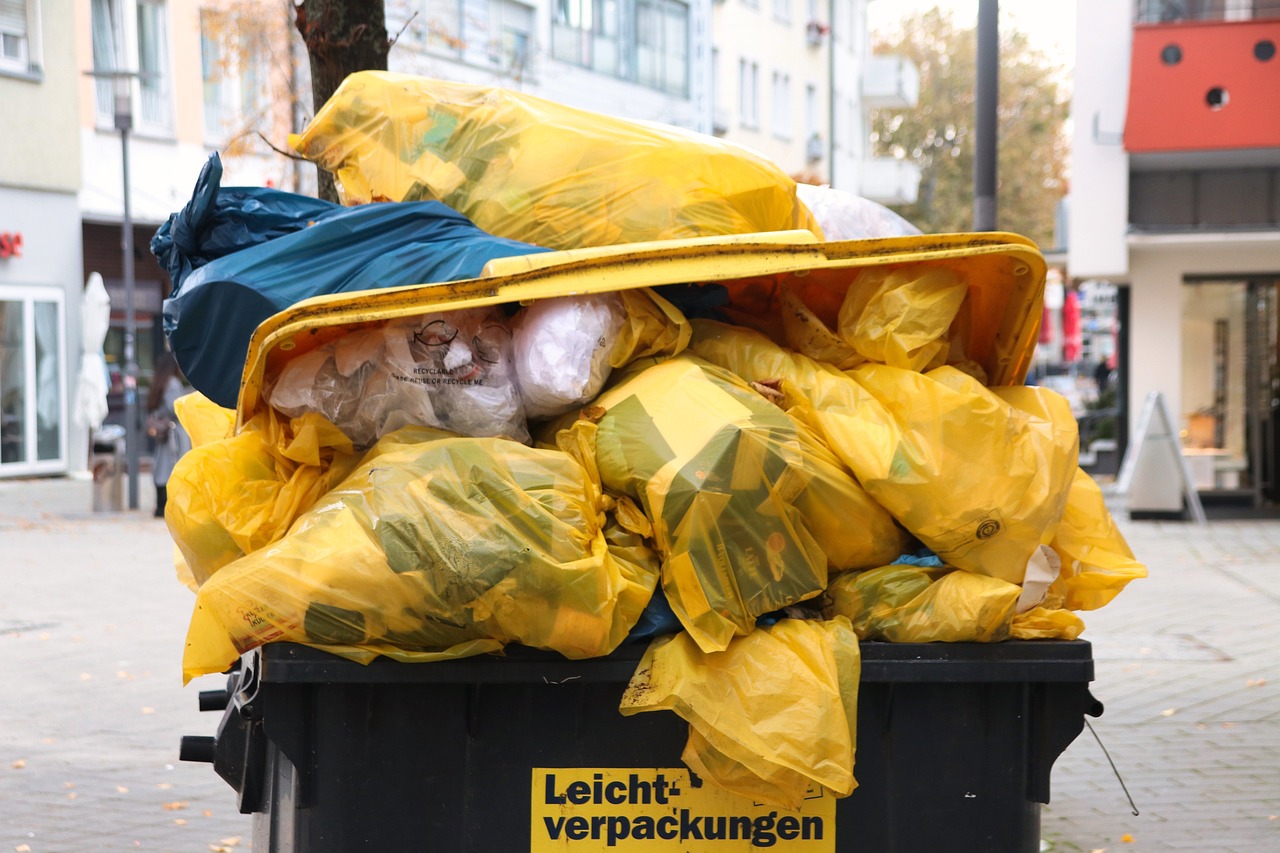
Local Recycling Guidelines
Understanding local recycling guidelines is crucial for effective waste management and maximizing recycling efforts. Each community has its own set of rules that dictate what can and cannot be recycled, which can often lead to confusion. For instance, while some areas may accept certain types of plastics, others may not. This inconsistency can result in recyclable materials ending up in landfills, which is the opposite of what we want to achieve.
To navigate these guidelines successfully, it’s important to take a few steps:
- Check Local Resources: Most municipalities provide resources online that detail their specific recycling rules. This might include lists of acceptable materials, instructions on how to prepare items for recycling, and information on drop-off locations.
- Join Community Workshops: Many local governments or environmental organizations host workshops that educate residents about recycling best practices. These sessions can provide valuable insights and clarify any doubts.
- Stay Updated: Recycling guidelines can change, so it's essential to stay informed about any updates in your area. Subscribe to local newsletters or follow community social media pages to receive timely information.
Here’s a simple table summarizing some common items and their recyclability based on typical local guidelines:
| Item | Recyclable? | Notes |
|---|---|---|
| Plastic Bottles | Yes | Check for recycling code 1 or 2. |
| Glass Jars | Yes | Rinse and remove lids before recycling. |
| Pizza Boxes | No | Contaminated with grease, not accepted. |
| Aluminum Cans | Yes | Rinse before recycling for better quality. |
| Plastic Bags | No | Often not accepted; check for drop-off bins. |
By familiarizing yourself with these local guidelines, you can help reduce contamination in the recycling stream, ensuring that more materials are processed correctly. Remember, every small effort counts towards a larger goal of sustainability and environmental responsibility.
1. What should I do if I'm unsure about an item's recyclability?
If you're uncertain whether an item can be recycled, consult your local recycling guidelines or contact your waste management authority for clarification.
2. Are there penalties for not recycling correctly?
While penalties vary by location, improper recycling can lead to fines or increased waste management costs for communities. It's best to follow local guidelines to avoid any issues.
3. Can I recycle items that are labeled as “biodegradable”?
Not necessarily. Many biodegradable items cannot be processed in standard recycling facilities. Always check local guidelines to see if they accept such items.
4. How can I encourage others to recycle?
Share information about local recycling programs, organize community clean-up events, and create awareness through social media to motivate others to participate in recycling efforts.

Myth 3: Recycling is a Waste of Time
Some people argue that recycling is futile and does not make a difference. This belief can be quite disheartening, especially when so many individuals are trying to do their part for the planet. However, let’s take a moment to unpack this myth. In reality, recycling is a powerful tool that conserves resources, reduces landfill waste, and lowers greenhouse gas emissions. Think of recycling as a superhero cape for our planet; it may not seem like much at first glance, but its impact is monumental!
One of the most compelling reasons to recycle is its positive environmental impact. When we recycle, we help to protect our natural resources. For instance, recycling just one ton of paper can save over 17 trees, 7,000 gallons of water, and 4,100 kilowatts of electricity! Imagine the difference we could make if everyone participated in recycling. It’s like turning a small ripple into a huge wave of change!
Moreover, recycling plays a crucial role in reducing pollution. When materials are recycled rather than thrown away, we can significantly cut down on the amount of waste that ends up in landfills. This means fewer greenhouse gases are released into the atmosphere, which is vital for combating climate change. To put it simply, recycling is not just a feel-good activity; it's a necessity for a sustainable future.
Another aspect to consider is the economic benefits that recycling brings. It’s not just about saving the planet; it’s also about creating jobs and stimulating the economy. The recycling industry has grown tremendously, providing employment opportunities in various sectors, from collection and processing to manufacturing new products. In fact, for every job in the recycling sector, there are an estimated 1.17 jobs created in the manufacturing sector. So, when you recycle, you’re not just helping the environment; you’re also contributing to the economy!
To illustrate this, here’s a quick table showing some of the economic impacts of recycling:
| Material Recycled | Jobs Created | Environmental Benefits |
|---|---|---|
| Paper | 1.17 jobs per ton | Saves trees, water, and energy |
| Glass | 1.17 jobs per ton | Reduces raw material extraction |
| Aluminum | 1.17 jobs per ton | Conserves energy and resources |
In conclusion, recycling is far from a waste of time; it is a vital practice that benefits both the environment and the economy. If you ever find yourself doubting the importance of recycling, just remember that every little bit counts. By making a conscious effort to recycle, you’re part of a larger movement towards sustainability. So, the next time you toss a bottle in the recycling bin, think of it as a small but powerful action that contributes to a healthier planet. Together, we can turn the tide on waste and create a brighter future for generations to come.
- What materials can be recycled? Most common materials include paper, cardboard, glass, metals, and certain plastics. Always check local guidelines for specifics.
- Does recycling really make a difference? Absolutely! Recycling conserves resources, reduces pollution, and creates jobs, making a significant positive impact on the environment.
- How can I start recycling effectively? Familiarize yourself with your local recycling guidelines, separate your recyclables properly, and educate others about the importance of recycling.
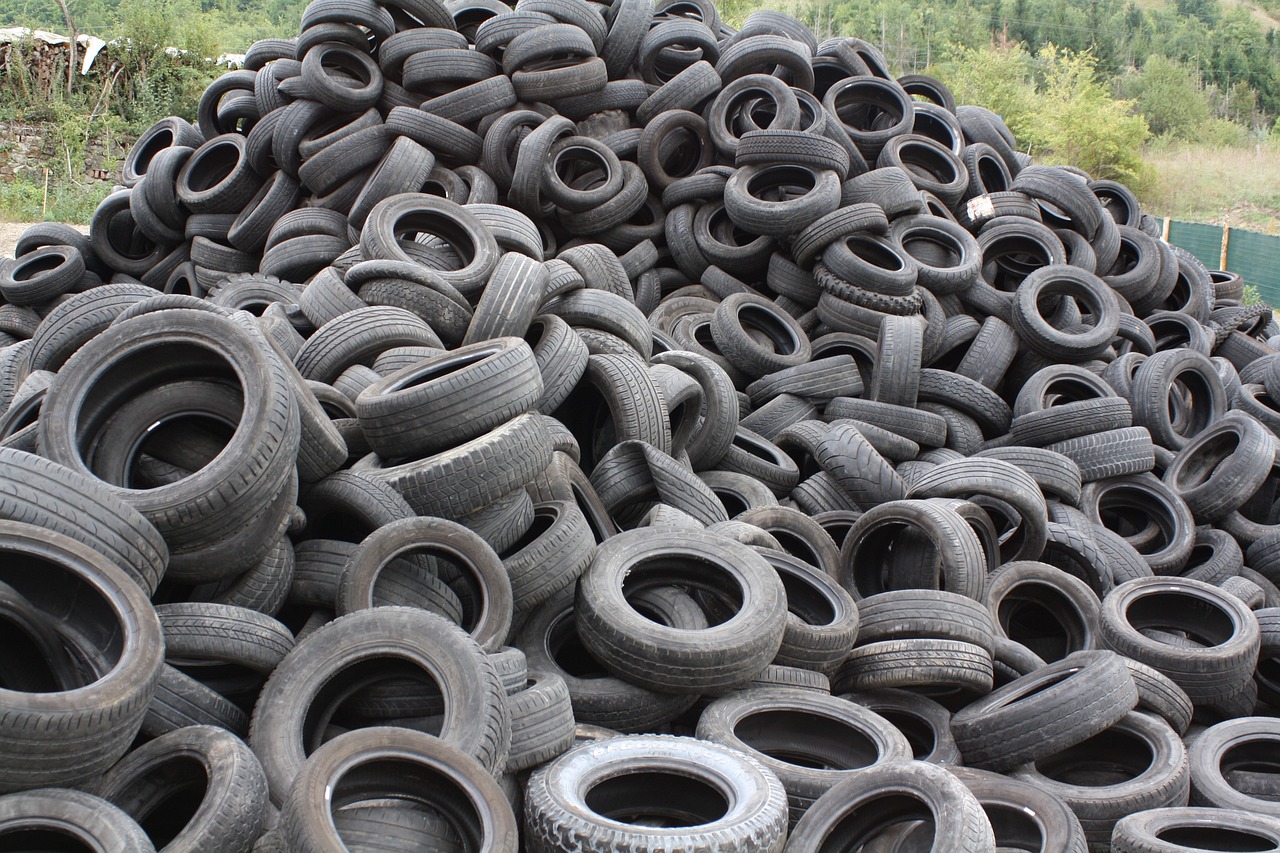
Environmental Impact of Recycling
This article explores common misconceptions surrounding recycling, aiming to clarify the facts and encourage more effective waste management practices for a sustainable future.
Many believe recycling processes are overly complex, deterring participation. In reality, understanding local guidelines simplifies recycling and promotes better habits for waste reduction.
A common misconception is that all plastic items can be recycled. However, only specific types are accepted by recycling facilities, making it essential to check local regulations.
Different types of plastics have varying recycling capabilities. Knowing the codes on plastic products helps consumers make informed choices about what can be recycled.
Plastic products are labeled with codes ranging from 1 to 7. Each code represents a different type of plastic, with some being more easily recyclable than others.
Certain plastic items, such as polystyrene and plastic bags, are often not accepted in curbside recycling programs, leading to confusion about their recyclability.
Recycling rules vary by location, making it crucial to consult local guidelines. Understanding these rules can significantly enhance recycling efforts and reduce contamination.
Some people argue that recycling is futile and does not make a difference. However, recycling conserves resources, reduces landfill waste, and lowers greenhouse gas emissions.
Recycling plays a vital role in protecting our environment. By turning waste into new products, we can significantly reduce the amount of material that ends up in landfills. This not only conserves precious natural resources but also minimizes pollution caused by waste disposal. Recycling contributes to a reduction in greenhouse gas emissions, as the energy required to create new products from raw materials is often much higher than that needed for recycling.
For instance, recycling aluminum saves about 95% of the energy compared to producing new aluminum from bauxite ore. This energy conservation translates into fewer fossil fuels burned, which is essential for combating climate change. Moreover, recycling paper reduces the need for deforestation, helping to preserve our forests and the wildlife that depends on them.
To put this into perspective, consider the following environmental benefits of recycling:
- Reduces landfill waste: By recycling, we can significantly decrease the volume of waste sent to landfills.
- Conserves energy: Recycling often requires less energy compared to manufacturing products from virgin materials.
- Decreases pollution: Fewer raw materials extraction means less air and water pollution.
- Preserves natural resources: Recycling helps maintain the availability of natural resources for future generations.
In summary, recycling is not just a personal choice; it’s a collective responsibility that has far-reaching benefits for our planet. By understanding its environmental impact, individuals and communities can make more informed decisions that contribute to a healthier, more sustainable world.
Recycling not only benefits the environment but also stimulates the economy. It creates jobs and generates revenue, demonstrating that recycling is both environmentally and economically advantageous.
Many people think recycling is limited to paper and plastic. In reality, various materials, including metals and glass, can be recycled, expanding the scope of recycling efforts.
Metals like aluminum and steel are highly recyclable and can be reused multiple times without losing quality. Understanding their recyclability can enhance metal waste management practices.
Glass is 100% recyclable and can be recycled indefinitely. Its recycling process saves energy and reduces the need for raw materials, making it an essential component of waste management.
Some believe recycling is solely an individual responsibility. However, businesses and communities play a crucial role in promoting recycling initiatives and creating a culture of sustainability.
Many companies implement recycling programs to reduce waste and promote sustainability. These initiatives can significantly impact environmental conservation and corporate social responsibility.
Communities can foster recycling through organized programs and awareness campaigns. Collective efforts enhance recycling rates and create a more sustainable environment for all residents.
- What materials can I recycle? Most communities accept paper, cardboard, glass, metals, and certain plastics. Always check local guidelines.
- Is recycling worth the effort? Absolutely! Recycling conserves resources, saves energy, and reduces pollution, making it a crucial part of sustainable living.
- How can I improve my recycling habits? Educate yourself on local recycling rules, sort your waste properly, and participate in community recycling programs.
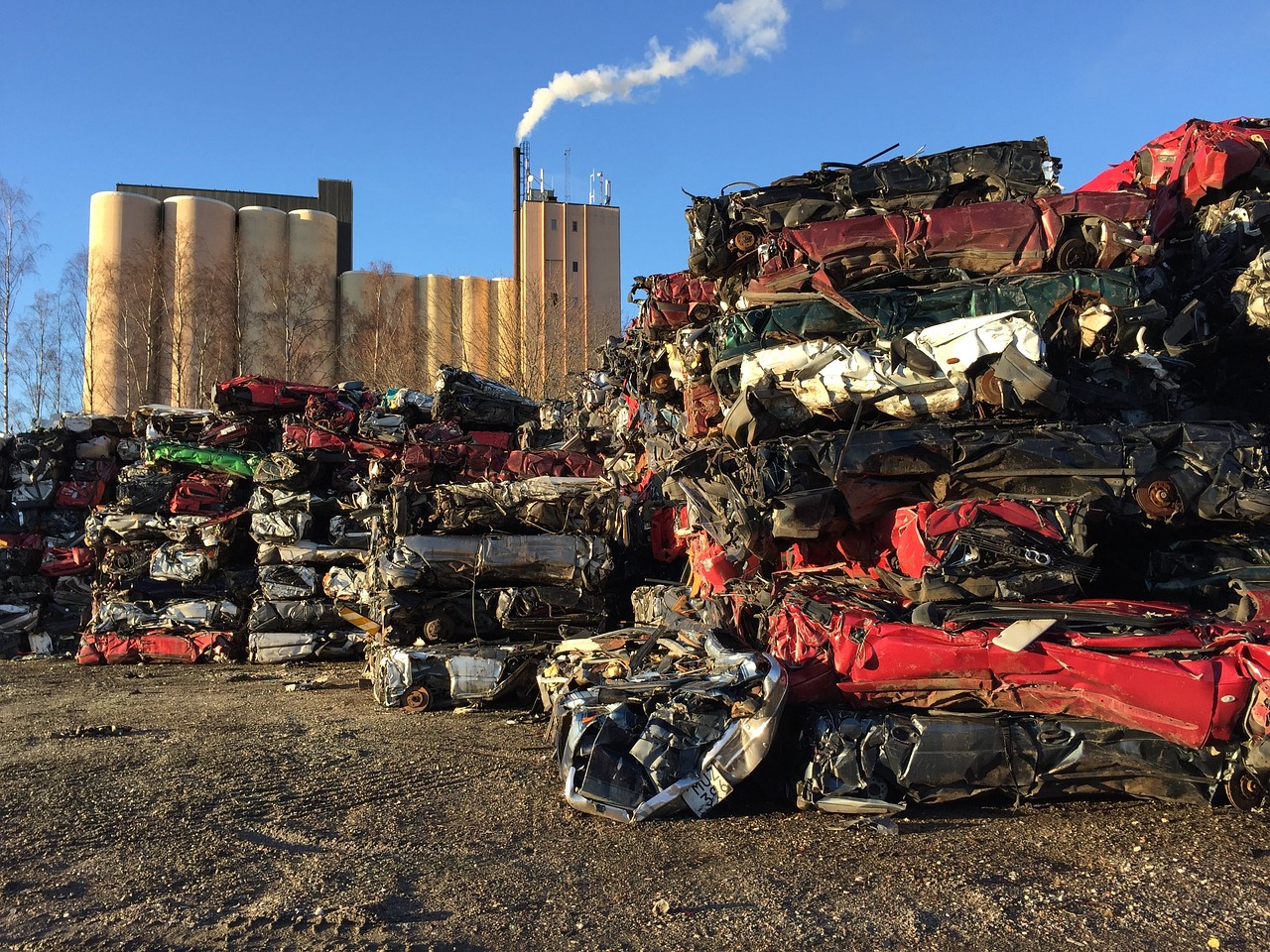
Economic Benefits of Recycling
When you think about recycling, you might imagine sorting through your trash or dropping off bottles at a recycling center. But have you ever considered the economic benefits that recycling brings to our communities and the broader economy? It's not just about saving the planet; it's also about boosting jobs and creating revenue streams. In fact, recycling contributes to a circular economy, where materials are reused and repurposed, reducing the need for new resources. This, in turn, leads to cost savings for businesses and consumers alike.
One of the most significant economic advantages of recycling is job creation. The recycling industry is a powerhouse in terms of employment. According to recent studies, for every job in the recycling sector, there are approximately 1.17 jobs created in the reuse and recycling industries. This means that as we recycle more, we not only save the environment but also create more opportunities for individuals to find steady work. From collection and sorting to processing and manufacturing, the recycling chain offers diverse roles that contribute to economic growth.
Moreover, recycling can lead to substantial savings for businesses. By utilizing recycled materials, companies often find that they can cut down on production costs. For example, using recycled aluminum can save up to 95% of the energy required to produce new aluminum from raw materials. This energy efficiency translates into lower operational costs, which can be a game-changer for businesses trying to remain competitive in a tough market.
Additionally, the revenue generated from recycling programs can be reinvested into the community. Many local governments run recycling initiatives that not only help manage waste but also bring in funds through the sale of recyclables. This income can be used to enhance public services, improve infrastructure, or even fund educational programs about sustainability. When communities embrace recycling, they often find that the economic benefits ripple through various sectors, creating a more robust local economy.
Lastly, recycling has a positive impact on property values. Areas that prioritize sustainability and have effective recycling programs tend to attract environmentally conscious residents and businesses. This can lead to increased demand for housing and commercial spaces, ultimately driving up property values. In short, recycling is not just an environmental initiative; it's also a smart economic strategy that benefits everyone involved.
To sum it up, the economic benefits of recycling are substantial and far-reaching. From job creation to cost savings and community revenue, embracing recycling is a win-win situation. So, the next time you toss something into the recycling bin, remember that you're not just doing your part for the planet; you're also contributing to a thriving economy.
- What are the main economic benefits of recycling? Recycling creates jobs, reduces production costs for businesses, generates revenue for communities, and can increase property values.
- How does recycling contribute to job creation? The recycling industry encompasses various roles, from collection to processing, leading to more employment opportunities.
- Can recycling save businesses money? Yes, using recycled materials can significantly reduce production costs and energy consumption.
- How does recycling impact local communities? Revenue from recycling programs can be reinvested in public services, infrastructure, and sustainability education.

Myth 4: Recycling is Only for Paper and Plastic
Many people operate under the misconception that recycling is limited solely to paper and plastic. This myth can lead to a significant underutilization of recycling programs and a missed opportunity to conserve valuable resources. In reality, recycling encompasses a wide range of materials, including metals, glass, and even certain electronics. Understanding the full spectrum of recyclable materials not only enhances our recycling efforts but also contributes to a more sustainable environment.
Let’s delve deeper into some of the materials that are often overlooked in recycling discussions:
- Metals: Metals like aluminum and steel are highly recyclable. In fact, recycling aluminum saves about 90% of the energy required to produce new aluminum from raw materials. This means that recycling just one aluminum can save enough energy to power a TV for three hours!
- Glass: Glass is 100% recyclable and can be recycled indefinitely without losing quality. The recycling process for glass requires significantly less energy compared to producing new glass from raw materials, which helps to reduce greenhouse gas emissions.
- Electronics: E-waste is a growing concern, and many components found in electronics can be recycled. This includes metals, plastics, and even precious metals like gold and silver. Proper recycling of e-waste prevents harmful materials from entering landfills and promotes resource recovery.
To illustrate the importance of recycling beyond paper and plastic, consider the following table that outlines the recycling rates of various materials:
| Material | Recycling Rate (%) |
|---|---|
| Aluminum | 75 |
| Steel | 70 |
| Glass | 33 |
| Plastic | 9 |
| Paper | 66 |
As you can see, recycling metals and glass can significantly contribute to resource conservation. It’s essential to recognize that every material plays a role in the recycling ecosystem. By expanding our understanding of what can be recycled, we can all contribute to a more sustainable future.
In conclusion, recycling is not just about paper and plastic; it’s a comprehensive practice that includes a variety of materials. By embracing this broader perspective, we can enhance our recycling efforts and make a meaningful impact on our environment.
Q: Can I recycle pizza boxes?
A: It depends! If the box is greasy or contaminated with food, it typically cannot be recycled. However, if it's clean, you can recycle it with cardboard.
Q: What should I do with electronics that I no longer use?
A: Many communities have e-waste recycling programs. Check with your local recycling center to see how to dispose of electronics responsibly.
Q: Are all plastics recyclable?
A: No, not all plastics are recyclable. It's essential to check the recycling codes and local guidelines to determine which plastics can be recycled.
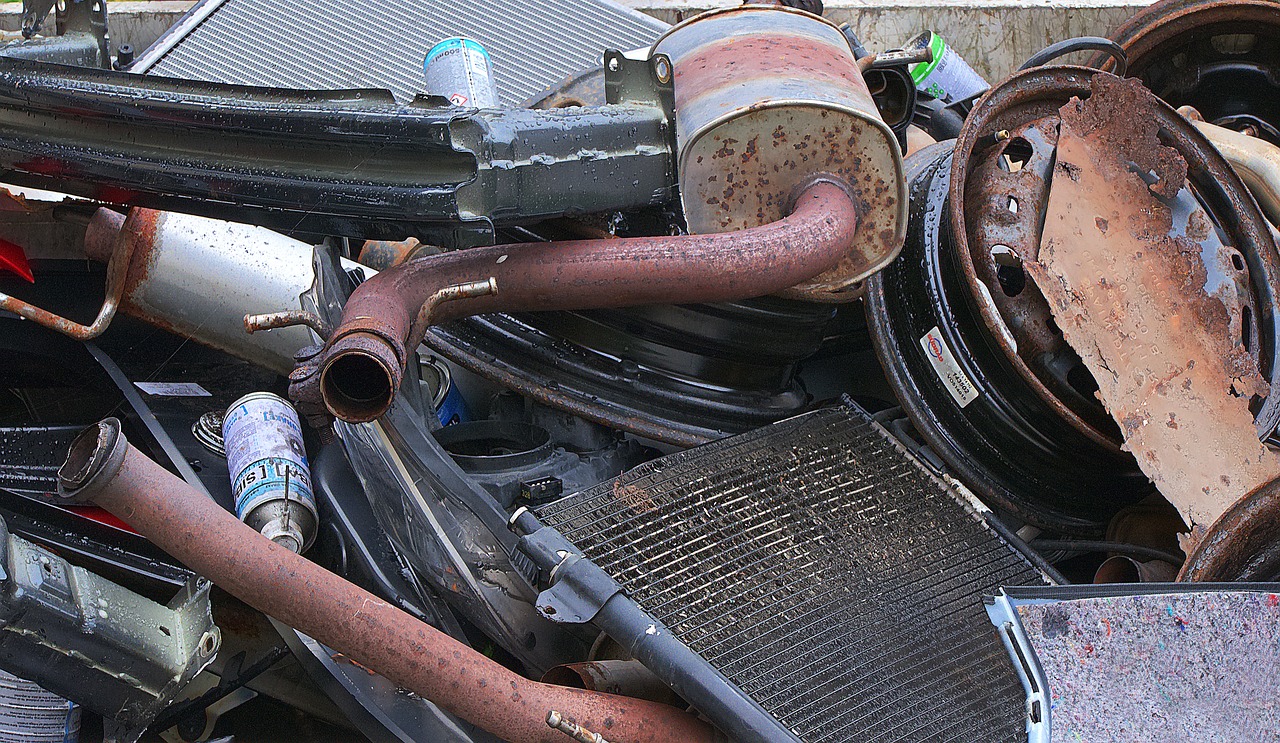
Recyclable Metals
When it comes to recycling, many people overlook the incredible potential of metals. Metals like aluminum and steel are not only recyclable, but they are also among the most valuable materials in the recycling industry. Unlike some materials that degrade in quality when recycled, metals can be reused repeatedly without losing their integrity. This means that every time you recycle a metal can or a steel product, you are contributing to a sustainable cycle that conserves resources and energy.
Let's dive deeper into the world of recyclable metals. Aluminum, for instance, is a superstar in the recycling realm. Did you know that recycling aluminum saves about 95% of the energy required to produce new aluminum from raw materials? This is equivalent to powering a home for several months! Similarly, steel is another metal that boasts remarkable recycling capabilities. The recycling process for steel is highly efficient, allowing it to be reused in various applications, from construction to automotive manufacturing.
Here are some key benefits of recycling metals:
- Energy Conservation: Recycling metals significantly reduces energy consumption compared to producing new metals from ores.
- Resource Preservation: By recycling, we decrease the need for mining, which can be detrimental to the environment.
- Economic Growth: The recycling industry creates jobs and stimulates economic activity in communities.
To further illustrate the importance of recycling metals, consider the following table that compares the energy savings from recycling various metals:
| Metal Type | Energy Saved by Recycling (compared to new production) |
|---|---|
| Aluminum | 95% |
| Steel | 74% |
| Copper | 85% |
In conclusion, recycling metals is not just a responsible action; it’s a powerful way to contribute to a sustainable future. By understanding the benefits and processes involved, we can all play a part in reducing waste and conserving our planet’s precious resources. So, the next time you finish a can of soda or toss out an old appliance, remember that recycling metals can make a significant difference!
- Q: What types of metals can be recycled?
A: Most common metals like aluminum, steel, copper, and brass can be recycled. Always check local guidelines for specific details. - Q: How does recycling metals help the environment?
A: Recycling metals conserves natural resources, reduces energy consumption, and lowers greenhouse gas emissions. - Q: Is there a limit to how many times metals can be recycled?
A: No, metals can be recycled indefinitely without losing quality, making them a sustainable choice.

Glass Recycling Benefits
When we think about recycling, glass often gets overshadowed by its more popular counterparts like plastic and paper. However, the benefits of recycling glass are nothing short of remarkable! First and foremost, glass is 100% recyclable, which means it can be recycled indefinitely without losing quality. This is a game-changer for sustainability because it reduces the need for new raw materials, ultimately conserving our planet's precious resources.
Moreover, recycling glass saves a significant amount of energy. Did you know that producing new glass from recycled materials uses about 30% less energy compared to making glass from raw materials? This energy savings translates into fewer fossil fuels burned and a reduction in greenhouse gas emissions, which is crucial for combating climate change. Imagine the impact if every household committed to recycling their glass—it's like turning off the lights in a room full of energy-sucking appliances!
Another benefit of glass recycling is its economic impact. The glass recycling industry creates jobs, from collection and processing to manufacturing new products. In fact, for every job in the recycling sector, there are approximately 1.17 jobs created in the manufacturing industry. This means that when we recycle glass, we’re not just helping the environment; we’re also boosting our economy. It’s a win-win situation!
Additionally, recycling glass helps reduce the amount of waste that ends up in landfills. Glass takes a long time to decompose—up to a million years! By recycling it, we can significantly decrease landfill waste and the associated environmental consequences. Plus, when glass is recycled, it can be transformed into various products, including new bottles, jars, and even insulation for homes. The possibilities are endless!
In summary, recycling glass is an essential part of sustainable waste management. It conserves energy, reduces landfill waste, creates jobs, and protects our environment. So, the next time you finish that delicious jar of pickles or enjoy a refreshing glass of soda, remember to recycle! Your small action can lead to significant benefits for our planet and future generations.
- What types of glass can be recycled? Most glass bottles and jars are recyclable, but it's best to check local guidelines for specifics.
- Do I need to clean my glass before recycling? Yes, rinsing out any food or drink residues can help prevent contamination in the recycling process.
- Can colored glass be recycled? Absolutely! Colored glass can be recycled just as effectively as clear glass.
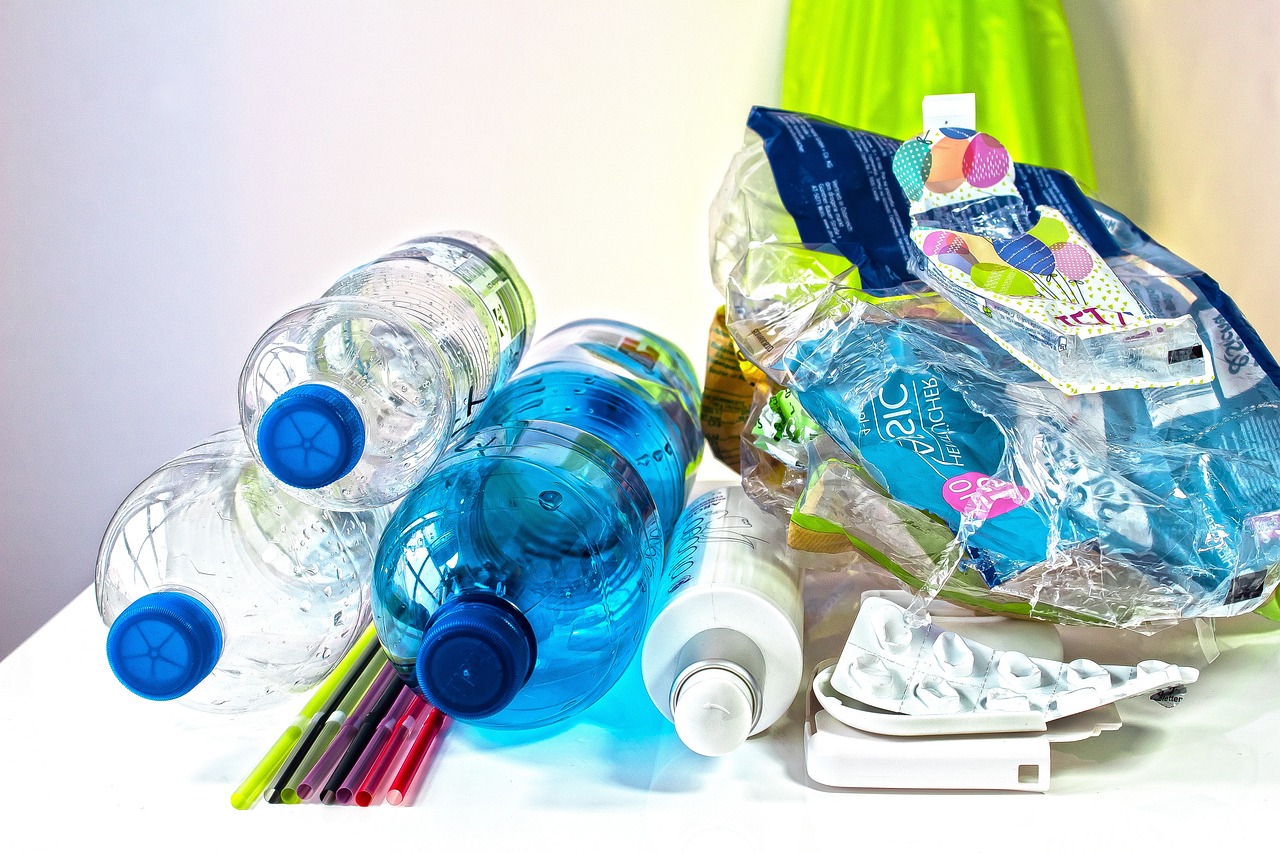
Myth 5: Recycling is Only for Individuals
Many people hold the misconception that recycling is solely an individual responsibility, believing that it's up to each person to sort their waste and ensure everything goes into the right bin. However, this perspective overlooks the significant roles that businesses and communities play in promoting recycling initiatives. In reality, recycling is a collective effort that requires participation from individuals, organizations, and local governments alike.
Businesses, for instance, have a crucial part to play in the recycling landscape. Many companies are now implementing comprehensive recycling programs aimed at minimizing waste and promoting sustainability. These corporate initiatives not only help in reducing the environmental footprint but also demonstrate a commitment to corporate social responsibility. By adopting practices such as using recyclable packaging, encouraging employees to recycle, and partnering with recycling facilities, businesses can make a substantial impact on waste management.
Moreover, communities can foster a culture of recycling through organized programs and awareness campaigns. Local governments often provide resources and guidance for residents, making it easier for everyone to participate. For example, community recycling events, educational workshops, and public service announcements can effectively raise awareness about the importance of recycling and how to do it properly. When communities come together to support recycling efforts, the results can be impressive, leading to higher recycling rates and a cleaner environment for all.
To illustrate the collective impact of these efforts, consider the following table that highlights the benefits of community and corporate recycling initiatives:
| Type of Initiative | Benefits |
|---|---|
| Corporate Recycling Programs |
|
| Community Recycling Initiatives |
|
Ultimately, recycling is not just a task for individuals; it’s a shared responsibility that involves everyone. By recognizing the importance of corporate and community contributions, we can work together towards a more sustainable future. So next time you think about recycling, remember that your efforts are part of a larger movement that includes businesses and communities, all striving to make a difference.
Q: What can I do to encourage my workplace to start recycling?
A: You can start by discussing the benefits of recycling with your colleagues and management. Suggest creating a recycling committee to develop a plan and implement recycling bins throughout the office.
Q: How can I find out what my local community recycles?
A: Check your local government’s website or contact your waste management office. They usually provide guidelines on what materials are accepted for recycling in your area.
Q: Are there any incentives for businesses to recycle?
A: Yes! Many governments offer tax incentives, grants, and recognition programs for businesses that implement effective recycling practices, which can also lead to cost savings.
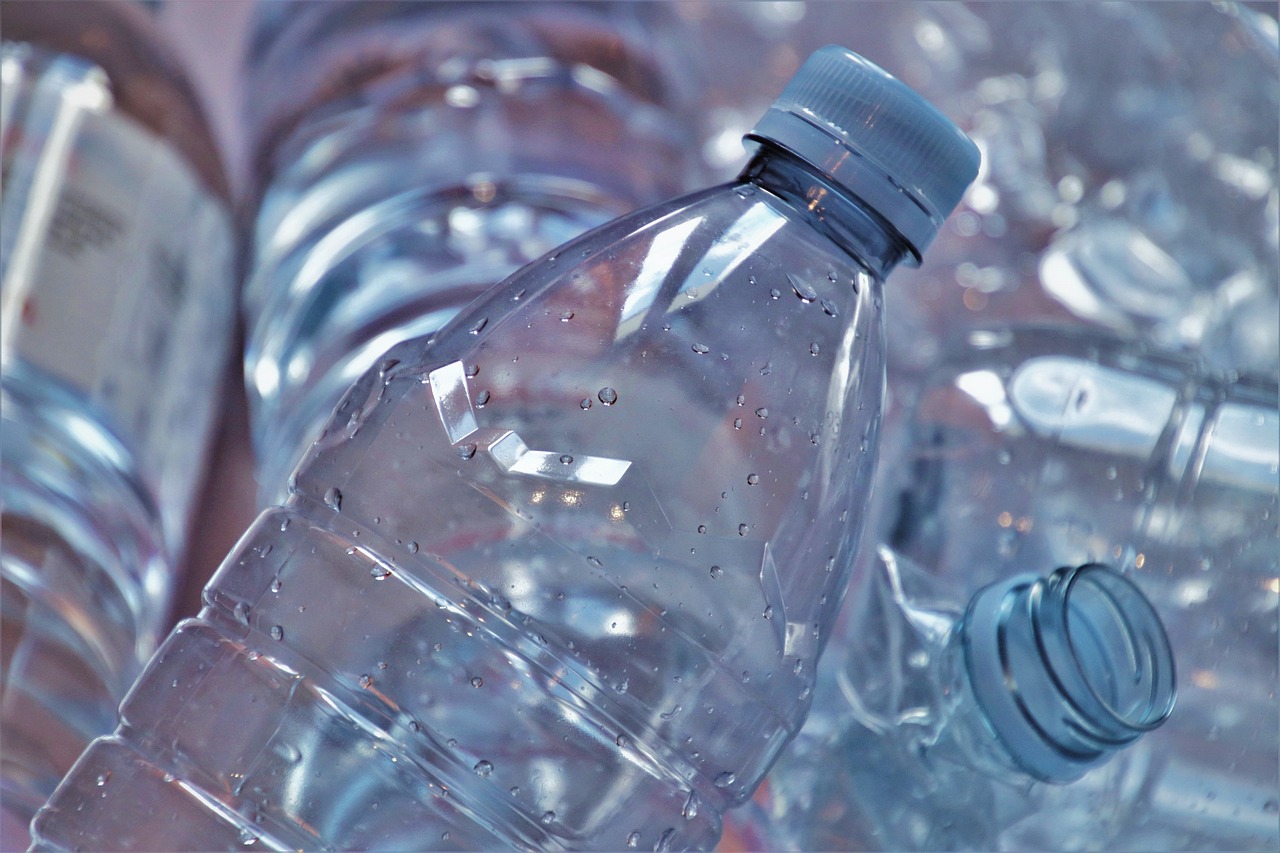
Corporate Recycling Programs
In today's world, where sustainability is becoming increasingly crucial, many companies are stepping up to the plate by implementing . These initiatives are not just a trend; they represent a significant shift in how businesses view their environmental responsibilities. By adopting effective recycling strategies, corporations can significantly reduce their waste output and promote a culture of sustainability within their workforce. But what exactly do these programs entail?
Corporate recycling programs often involve a comprehensive approach to waste management. This can include:
- Educating Employees: Companies often conduct training sessions to inform employees about the importance of recycling and how to participate effectively.
- Setting Up Recycling Stations: Businesses typically set up clearly labeled recycling bins throughout their facilities to make it easy for employees to recycle.
- Tracking Progress: Many organizations monitor their recycling rates and waste reduction efforts to assess the effectiveness of their programs.
Moreover, these programs can lead to substantial economic benefits. For instance, by recycling materials like paper, plastics, and metals, companies can reduce their waste disposal costs. Additionally, they may even generate revenue from selling recyclable materials to processing facilities. This not only helps the environment but also boosts the company's bottom line.
Another essential aspect of corporate recycling programs is their ability to enhance a company's public image. Consumers today are increasingly aware of environmental issues, and they often prefer to support businesses that demonstrate a commitment to sustainability. By actively engaging in recycling initiatives, companies can improve their brand reputation and attract eco-conscious customers.
In summary, corporate recycling programs play a vital role in promoting sustainability in the business world. They not only help reduce waste and conserve resources but also provide economic advantages and enhance corporate reputation. As more companies recognize the importance of these initiatives, we can expect to see a more significant impact on our environment and communities.
Q: What materials can be recycled in corporate programs?
A: Most corporate recycling programs accept paper, cardboard, plastics, metals, and sometimes electronics. However, it's essential to check local guidelines for specific materials.
Q: How can employees get involved in corporate recycling initiatives?
A: Employees can participate by following recycling guidelines, attending training sessions, and encouraging their colleagues to engage in sustainable practices.
Q: What are the benefits of recycling for businesses?
A: Recycling can reduce waste disposal costs, generate revenue from recyclable materials, and improve a company’s public image among consumers.
Q: Are there any challenges associated with implementing a corporate recycling program?
A: Yes, challenges may include employee participation, contamination of recyclable materials, and the initial costs of setting up recycling stations.

Community Recycling Initiatives
When it comes to recycling, communities have the power to make a significant impact. are essential for fostering a culture of sustainability and encouraging residents to participate actively in waste management. These programs not only enhance recycling rates but also create a sense of unity and responsibility among community members. Imagine a neighborhood where everyone is engaged in recycling—what a difference that would make!
One effective way communities can promote recycling is through organized events. For instance, community clean-up days provide residents with an opportunity to gather, clean up their surroundings, and learn about proper recycling practices. During these events, local organizations can set up booths to educate participants about what can and cannot be recycled, which is crucial for reducing contamination in recycling streams.
Moreover, some communities have implemented recycling education programs in schools. By teaching children about the importance of recycling from a young age, we can cultivate a new generation of environmentally conscious citizens. These programs often include interactive activities, such as art projects made from recycled materials, which help reinforce the message in a fun and engaging way.
Another innovative approach involves setting up recycling drop-off centers in easily accessible locations. These centers allow residents to drop off materials that may not be accepted in curbside programs, such as electronics or hazardous waste. By providing these resources, communities can ensure that more materials are recycled properly, thus diverting waste from landfills.
Furthermore, local governments can collaborate with businesses to create incentive programs that encourage recycling. For example, offering discounts or rewards for residents who consistently recycle can motivate more people to participate. This kind of partnership not only boosts recycling rates but also strengthens community ties as everyone works towards a common goal.
In summary, community recycling initiatives are vital for enhancing recycling efforts and fostering a sustainable environment. By organizing events, educating residents, providing accessible drop-off centers, and creating incentive programs, communities can make a significant difference in their recycling practices. So, let’s roll up our sleeves and work together to build a greener future!
- What types of materials can be recycled in my community? It varies by location, so check your local guidelines for specific materials accepted.
- How can I get involved in community recycling initiatives? Look for local events, volunteer opportunities, or educational programs in your area.
- Are there any incentives for recycling? Many communities offer rewards or discounts for residents who actively participate in recycling programs.
Frequently Asked Questions
- What are some common myths about recycling?
Many people believe that recycling is too complicated, that all plastics are recyclable, and that recycling is a waste of time. These misconceptions can hinder effective waste management and discourage participation in recycling programs.
- Is it true that all plastics can be recycled?
No, not all plastics are recyclable. Only specific types, indicated by recycling codes, can be processed at recycling facilities. It's essential to check local guidelines to understand which plastics are accepted.
- How can I find out what can be recycled in my area?
Consulting your local waste management authority or visiting their website can provide you with the most accurate and up-to-date recycling guidelines specific to your location.
- Does recycling really make a difference?
Absolutely! Recycling conserves resources, reduces landfill waste, and lowers greenhouse gas emissions. It plays a crucial role in protecting our environment and promoting sustainability.
- Are metals and glass recyclable?
Yes! Metals like aluminum and steel are highly recyclable, and glass can be recycled indefinitely. Both materials save energy and reduce the need for raw materials when recycled properly.
- Is recycling only an individual responsibility?
No, recycling is a collective effort. Businesses and communities also play a vital role in promoting recycling initiatives and fostering a culture of sustainability.
- What are corporate recycling programs?
Corporate recycling programs are initiatives implemented by companies to reduce waste and promote sustainable practices. These programs not only benefit the environment but also enhance corporate social responsibility.
- How can communities encourage recycling?
Communities can enhance recycling rates through organized programs, awareness campaigns, and by providing accessible recycling facilities. Collective efforts can create a more sustainable environment for all residents.



















